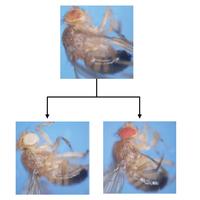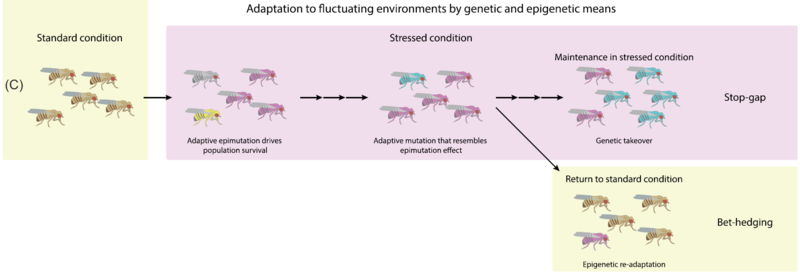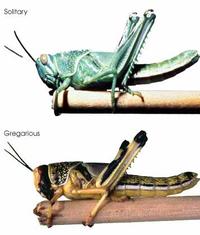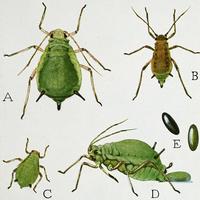Research
Overview
We are increasingly realizing that the genetic information encoded in DNA is only part of what makes an organism. Epigenetic information is responsible for incredible variation both between cells within an individual, and between individuals in a population. This information also has the possibility of being transmitted from parent to offspring, providing an epigenetic memory across generations.
We study how epigenetics contribute to heritable phenotypes, adaptation and evolution. We use different insect models to study this in the lab from the level of microscopic molecules all the way to whole organisms and populations. Our current research is focused around three main themes:
Theme 1: Molecular mechanisms of H3K27me3 inheritance
The study of epigenetic inheritance is often made difficult by the possibility of genetic factors confounding results. Investigation of its detailed molecular mechanisms requires careful experimentation in established model organisms that eliminate genetic variation as much as possible.

In this context, the Drosophila line known as Fab2L has emerged as a valuable system for the study of epigenetic inheritance in insects. This line carries a transgene controlling eye colour that is randomly silenced by the Polycomb Repressive Complex 2. This results in stochastic deposition of the repressive H3K27me3 histone modification, producing flies with red/white mosaic eye colour. Following a triggering event, this eye colour becomes heritable, allowing the selection of different "epilines" with fully white or fully red eyes that are nonetheless genetically identical.
The Fab2L line thus represents a unique model to study different aspects of epigenetic inheritance relating to H3K27me3 silencing. Much of our previous work has focused on the triggering event to understand how an initially random and non-heritable epigenetic difference can become heritable. We showed that this trigger involves changes in the 3D organisation of the genome within the nucleus. While this remains a point of interest, our plans for future work involve more detailed investigation of the mechanism by which the H3K27me3 is maintained through the germline and transmitted to the following generation.
Theme 2: The role of epigenetic inheritance in adaptation and evolution

Inheritance of epigenetic information provides an alternative to genetic inheritance that may fill a different role in the rapid adaptation of organisms to variable environments. The number of case studies of epigenetic inheritance continues to grow, however we lack a complete picture of how much epigenetic, rather than genetic, factors are actually contributing to heritable phenotypes, adaptation and evolution in natural populations.
We are interested in exploring these relative contributions and their implications for evolutionary theory from several angles, including mathematical modeling, molecular biology experiments and experimental evolution. One major goal is to measure the rate of appearance of new heritable epigenetic variation, or "epimutations", in populations of Drosophila to get a better understanding of its prevalence in natural conditions.
Theme 3: Molecular epigenetic determinants of insect polyphenism

Polyphenism denotes the phenomenon by which one genotype can give rise to two
or more distinct phenotypes. Observed in several insect species, among others, the choice of phenotype is often influenced by environmental factors in early development, ensuring that the adult adopts the phenotype most suited to its current conditions. By definition, polyphenism is therefore an epigenetic phenomenon. However, the molecular epigenetic signals that underpin the very evident phenotypic differences often remain uncharacterised.

Our current research in this theme focuses on determining the epigenetic signals responsible for canalising the Desert Locust (Schistocerca gregaria) into one of two highly distinct forms: the "solitarious" grasshopper (solitary, cryptic, sedentary) or the "gregarious" locust (swarming, aposematic, migratory).
In the future, we are interested in expanding this theme through collaborations to study polyphenism in some of the many other insect species that display it.


